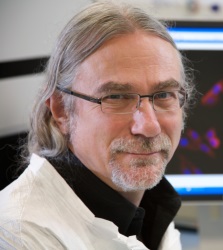 Marking the BIA’s 25th anniversary, our inaugural annual lecture will be delivered this week by Dr Stephen Minger, Chief Scientist for Cellular Sciences at GE Healthcare Life Sciences. In the lead up to his speech tomorrow, here Stephen shares his reflections on the past quarter of a century and provides a preview of three themes which he believes will play a key role in the biotechnology industry over the next 25 years.
Marking the BIA’s 25th anniversary, our inaugural annual lecture will be delivered this week by Dr Stephen Minger, Chief Scientist for Cellular Sciences at GE Healthcare Life Sciences. In the lead up to his speech tomorrow, here Stephen shares his reflections on the past quarter of a century and provides a preview of three themes which he believes will play a key role in the biotechnology industry over the next 25 years.
I am very much looking forward to speaking at the BioIndustry Association’s annual lecture tomorrow, which comes during its 25th anniversary year. Much has changed in the biotechnology industry over the last quarter of a century, and the BIA has been instrumental in creating the right environment for the industry to flourish. During my lecture I will be sharing some reflections on how the sector has evolved since 1989 when the BIA was founded, as well as discussing three key areas of interest for the next 25 years, all against the backdrop of some striking cell imagery courtesy of the finalists from this year’s GE Healthcare Cell Imaging competition.
There are many advances we take for granted these days which were unknown or at the very early stages of development back in 1989. For example, the field of cell therapy and regenerative medicine was only just emerging; 25 years on and cell therapy is one of the most promising areas of development within the sector, and one of the three key areas I will be discussing in my lecture.
After a number of years in the pipeline, the concept of precision medicine is also beginning to become a reality. The molecular make-up of many diseases is gradually being decoded, allowing us to distinguish between different types of the same disease and therefore target therapy appropriately. The potential reward for patients from precision medicine is vast, and may alter the way we treat certain diseases in the future.
Another area which I believe will have a large impact on the industry over the next 25 years is the use of Big Data.
Cell therapy, precision medicine and big data are only three examples from a number of exciting developments which will advance the biotechnology industry over the next quarter of a century. These developments will bring new challenges for the sector, but promise to ensure that biotechnology enjoys another 25 years of innovation and excitement.
I am very much looking forward to discussing these exciting future trends with attendees at the lecture tomorrow.


0 Comments